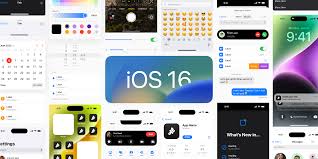For many years, Sketch was the undisputed champion when it came to app design platforms. With the emergence of the user interface design platform Figma, however, Sketch’s days appear to be numbered. When reading through forums and message boards exploring collaborative app design, it’s clear to see that Figma has well and truly taken over as the new platform of choice for both established and aspiring web developers.
Alongside this, the UX Tools’ 2020 Design Tool Survey, which is held annually and polls UX designers around the world, was dominated by Figma, with the platform being voted best in class across six of the eight different categories.
So why is Figma rated so highly while Sketch has fallen so far behind? Firstly, Sketch is exclusively for use on Apple computers, which puts Windows developers at a significant disadvantage. Figma is a multi-platform platform that has enabled a new breed of app design on PCs, but this is not the only reason it has claimed its place at the top.
Read: Learn Web Design Quickly: Top 5 Tips
We’ll be exploring the rise of Figma in more detail below.
What Is Figma?
The Figma web app is a graphics editing and user interface design app that UX designers can use to wireframe websites, create mobile app interfaces, prototype designs, and craft social media posts amongst a myriad of other things.
There are several differences between Figma and other graphics editing tools. First, Figma is primarily a browser-based tool. So you won’t have to buy multiple licences or install software to access and work on your projects. You can use the Figma Mirror app on either iOS or Android devices, but using the app isn’t necessary in order to reap the platform’s full functionality.
Key features developers can enjoy when designing with Figma

Designers also love Figma because it offers a generous free plan that allows you to store up to three active projects at one time, as well as collaborate with fellow designers and developers who may be working remotely. You can learn, experiment, and complete small projects all within the Figma interface.
As a design tool, Figma also includes vector tools that are capable of fully-fledged illustration and prototyping capabilities, as well as code generation options. Amongst its greatest strengths, however, is Figma’s always-online feature. The ability to collaborate live, in real-time, is also one of Figma’s strongest points.
All team members can access the same design at the same time and make changes simultaneously. Due to the fact that these design files are all stored online, you won’t have to worry about team members falling behind or making unapproved changes. All changes are always immediately visible in the file, and there is no need to transfer files between team members or push data between third-party storage platforms.
Effectively, Figma provides a holistic package that can be accessed on any device by teams scattered across the world. While platforms like Sketch have supporting software that can boost their effectiveness, Figma comes with everything you need, right out of its figurative box.
The Best Part? It Is Simple To Migrate To Figma
It can be daunting for app designers to become accustomed to a platform and then become faced with the prospect of having to learn a completely new solution. Fortunately, Figma makes the migration process rather simple.
Another one of the best features, Figma boast is its ability to import all of your Sketch projects. This process is simple, seamless and perfect – there will be no loss of data, no image corruption, just a 1:1 recreation of everything you have worked on previously in Sketch.
Migrating to Figma is not only simple for individuals, it is also a dream for collaborative teams. You can connect your Slack account up alongside Figma and set up unique Figma notifications to ensure that your team stays in the loop with regard to one another’s changes and developments regardless of whether or not your fellow teammates are online.
This allows teams to create workflows and collaborate on projects even when they are in different locations. Multiple users can migrate data, images and illustrations through a clear workflow process where every member of the team has total visibility on the project as a whole.
Finally, for those looking to design their app using code, you can also integrate Figma with prototyping tool Framer so that elements can be imported with a single click and there is no need to export it layer by layer. With all this in mind, it’s no wonder that Figma has become so popular! It really is the complete toolkit for app design professionals.




